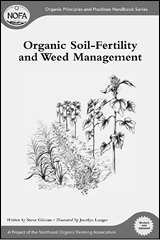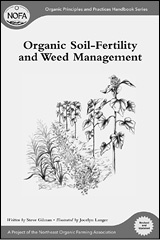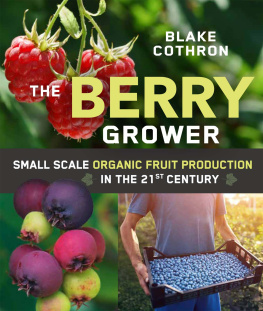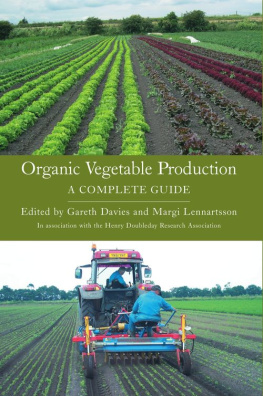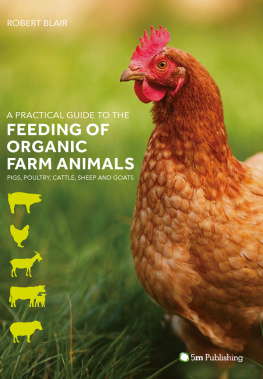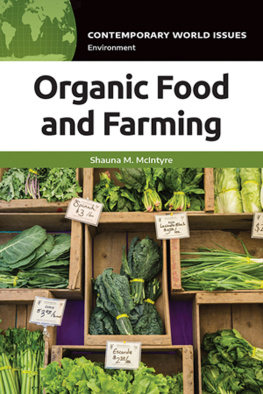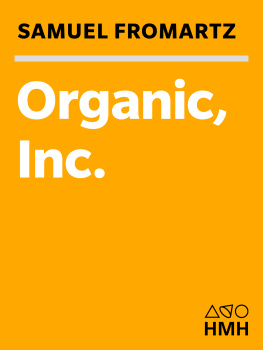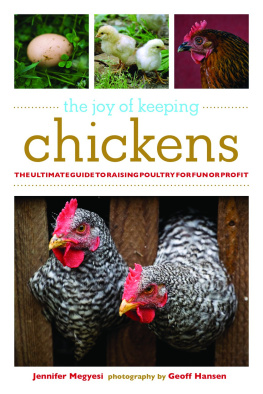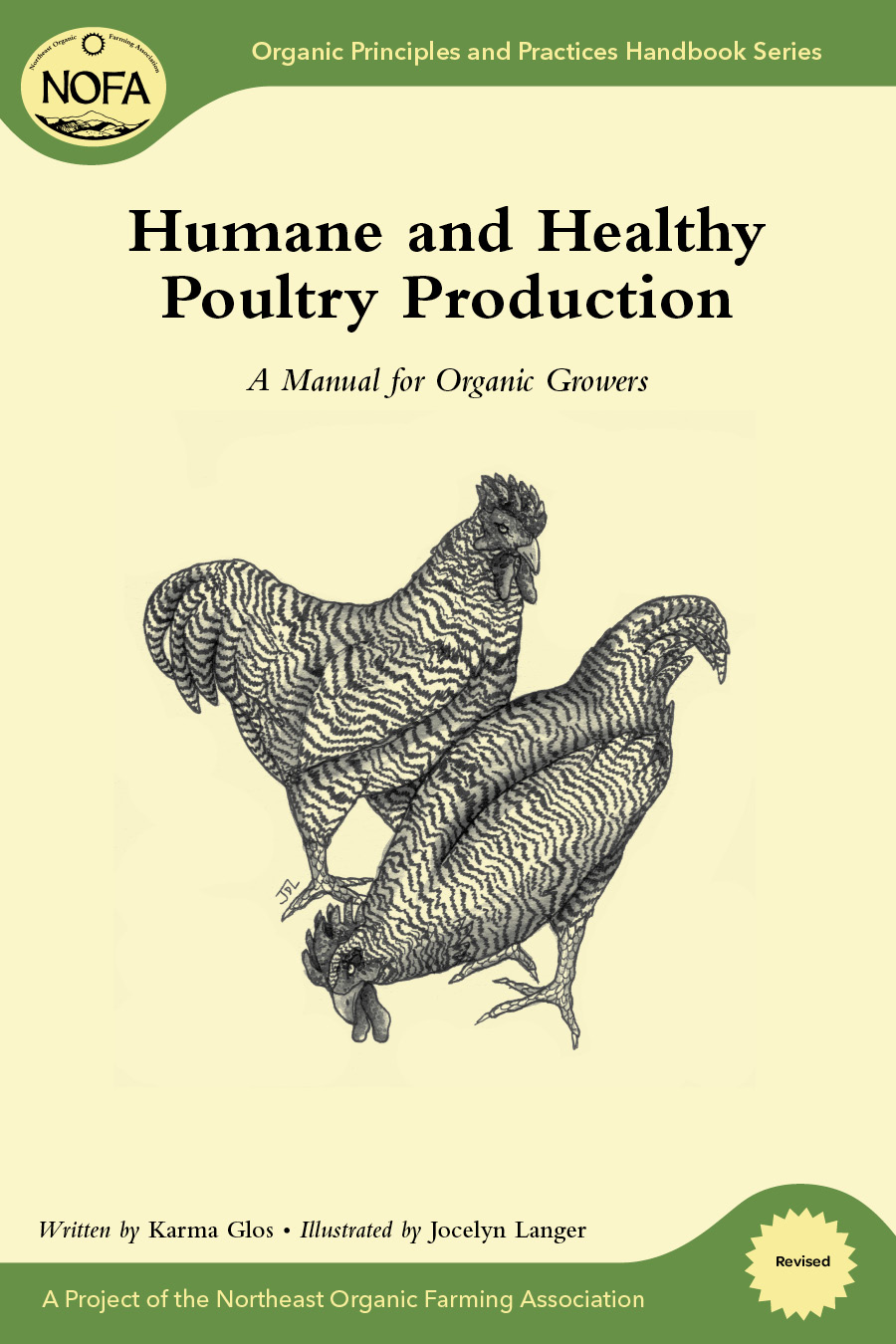
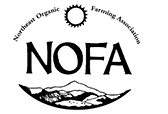
Organic Principles and Practices Handbook Series
A Project of the Northeast Organic Farming Association
Humane and Healthy Poultry Production
A Manual for Organic Growers
Revised
Karma Glos
Illustrated by Jocelyn Langer
Chelsea Green Publishing
White River Junction, Vermont
Copyright 2004, 2011 by the Northeast Organic Farming Association Interstate Council.
All rights reserved.
No part of this book may be transmitted or eproduced in any form by any means without permission in writing from the publisher.
Editorial Coordinator: Makenna Goodman
Project Manager: Bill Bokermann
Copy Editor: Cannon Labrie
Proofreader: Helen Walden
Indexer: Peggy Holloway
Designer: Peter Holm, Sterling Hill Productions
Printed in the United States of America
First Chelsea Green printing March, 2011
10 9 8 7 6 5 4 3 2 1 11 12 13 14
Our Commitment to Green Publishing
Chelsea Green sees publishing as a tool for cultural change and ecological stewardship. We strive to align our book manufacturing practices with our editorial mission and to reduce the impact of our business enterprise in the environment. We print our books and catalogs on chlorine-free recycled paper, using vegetable-based inks whenever possible. This book may cost slightly more because we use recycled paper, and we hope youll agree that its worth it. Chelsea Green is a member of the Green Press Initiative, a nonprofit coalition of publishers, manufacturers, and authors working to protect the worlds endangered forests and conserve natural resources. Humane and Healthy Poultry Production was printed on Joy White, a 30-percent postconsumer recycled paper supplied by Thomson-Shore.
Library of Congress Cataloging-in-Publication Data
Glos, Karma.
Humane and healthy poultry production : a manual for organic growers / Karma Glos ; illustrated by Jocelyn Langer.
p. cm. -- (Organic principles and practices handbook series)
A Project of the Northeast Organic Farming Association.
Originally published: Barre, MA : Northeast Organic Farming Association Interstate Council, 2004.
ISBN 978-1-60358-357-2
1. Poultry. 2. Organic farming. I. Langer, Jocelyn. II. Title. III. Series: Organic principles and practices handbook series.
SF487.G546 2011
636.5--dc22
2010051223
eISBN: 9781603583589
Chelsea Green Publishing Company
Post Office Box 428
White River Junction, VT 05001
(802) 295-6300
www.chelseagreen.com
Best Practices for Farmers and Gardeners
The NOFA handbook series is designed to give a comprehensive view of key farming practices from the organic perspective. The content is geared to serious farmers, gardeners, and homesteaders and those looking to make the transition to organic practices.
Many readers may have arrived at their own best methods to suit their situations of place and pocketbook. These handbooks may help practitioners review and reconsider their concepts and practices in light of holistic biological realities, classic works, and recent research.
Organic agriculture has deep roots and a complex paradigm that stands in bold contrast to the industrialized conventional agriculture that is dominant today. Its critical that organic farming get a fair hearing in the public arenaand that farmers have access not only to the real dirt on organic methods and practices but also to the concepts behind them.
About This Series
The Northeast Organic Farming Association (NOFA) is one of the oldest organic agriculture organizations in the country, dedicated to organic food production and a safer, healthier environment. NOFA has independent chapters in Connecticut, Massachusetts, New Hampshire, New Jersey, New York, Rhode Island, and Vermont.
This handbook series began with a gift to NOFA/Mass and continues under the NOFA Interstate Council with support from NOFA/Mass and a generous grant from Sustainable Agriculture Research and Education (SARE). The project has utilized the expertise of NOFA members and other organic farmers and educators in the Northeast as writers and reviewers. Help also came from the Pennsylvania Association for Sustainable Agriculture and from the Maine Organic Farmers and Gardeners Association.
Jocelyn Langer illustrated the series, and Jonathan von Ranson edited it and coordinated the project. The Manuals Project Committee included Bill Duesing, Steve Gilman, Elizabeth Henderson, Julie Rawson, and Jonathan von Ranson. The committee thanks SARE and the wonderful farmers and educators whose willing commitment it represents.
Organic agriculture is a holistic system of production designed to optimize the productivity and fitness of diverse communities within the agroecosystem, including soil organisms, plants, livestock and people.
Canadian National Standards for Organic Agriculture
Organic production is a system that is managed... to respond to site-specific conditions by integrating cultural, biological and mechanical practices that foster cycling of resources, promote ecological balance and conserve biodiversity.
USDA, National Organic Program
Contents
I have been a poultry lover my whole life, beginning with a little Barred Rock chick I purchased at the local pet store for Easter. I was only nine, but that ball of fluff started a lifelong interest in poultry. George (though it later turned out to be a hen) slept on my pillow. She was my constant companion and we spent hours wandering the garden looking for worms under rocks. When I had the opportunity to move out to the country to live with my dad, George went too. Dad had an entire flock of chickens: Black Australorps, Rhode Island Reds, and Buff Orpingtons, but George continued to hang out with me. We took daily walks into the hills to explore, and she commonly rode on my shoulder or forded irrigation ditches in my upheld arms. She lived a long life, producing eggs and coming when called.
I have always managed to have contact with chickens and other livestock. When my husband and I established Kingbird Farm in 1996 it was a given that I would keep poultry. Not just chickenspoultry of all kinds, running about the place and troubling my husbands vegetables. We began with a small egg flock, which was quickly followed by our first batch of broilers la Joel Salatin. This snowballed into layers, turkeys, ducks, and geese. We are still a very small poultry operation by conventional standards, and poultry is only a part of our farms diversity, but it is a vibrant and viable part of a complex dance on our farm in which plants, animals, wildlife, weather, soil, structures, water, farmers, and chance have their own role in the performance. Our success at creatively and profitably incorporating poultry into this dance has developed from our keen observation of the birds, as we look out for their individual needs and the good of the flock.
The goal of organic farmers is to develop productive farms that are sustainable and harmonious with the environment. They recognize that theres a relationship between the health and vitality of their animals and the way the animals are kept. They are keenly aware of the links between the health of the land and crops and that of the animals. Theres also a humane element based on a fundamental respect for the animals, including their behavioral and psychological needs.
Organic poultry production systems can be sophisticated, technically advanced commercial operations or simple, small-farm add-ons integrated into a more complex agroecosystem. No matter the size or scale, the basic tenets of traditional organic agriculture apply.

